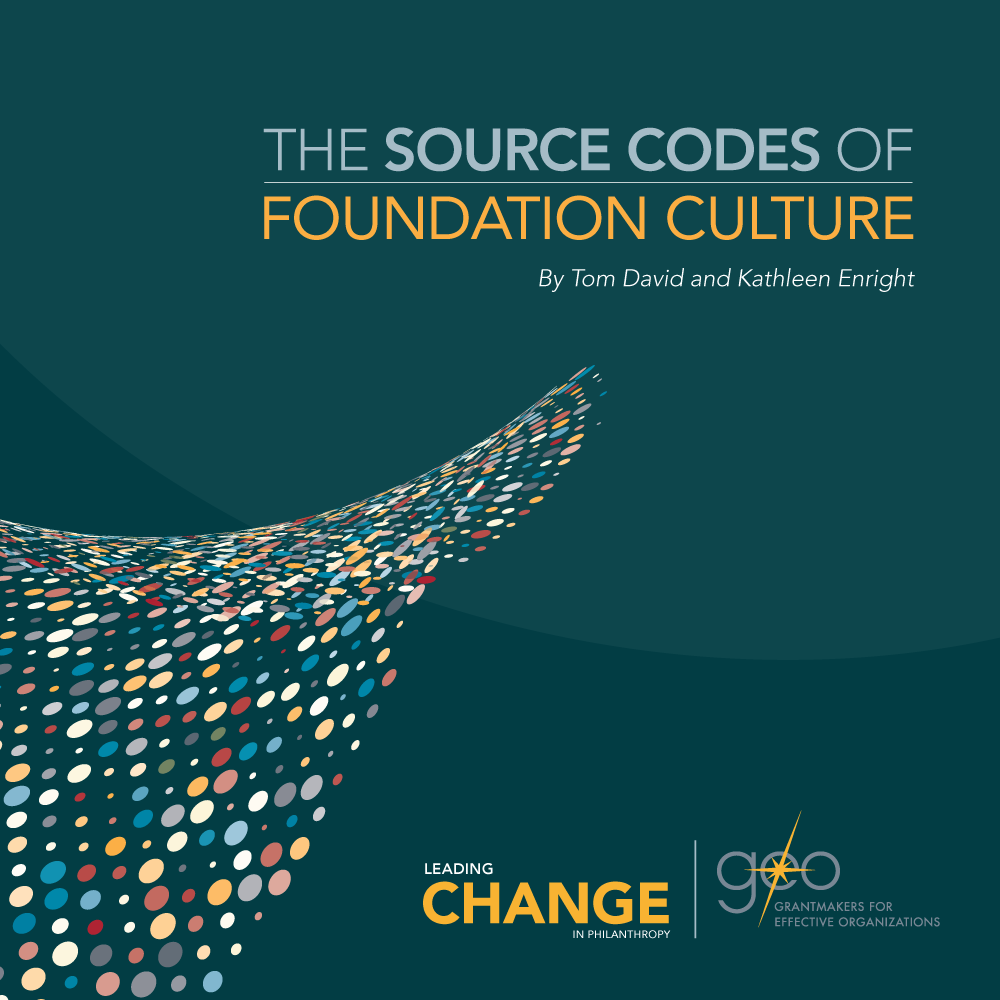By Kathleen Enright
In early October, GEO released what turned out to be our fastest downloaded publication of all time — in less than two months, The Source Codes of Foundation Culture has been accessed more times than many publications are in their lifetime. Our communications team might hypothesize that it’s a reflection of marketing prowess.
Though my colleagues are great at their jobs, I think there’s another reason that The Source Codes of Foundation Culture has been so popular: More and more people in philanthropy are realizing just how critical attending to organizational culture is to success in grantmaking. For many, this is a realization that culture and values play a crucial role in how well grantmakers are able to attend to the rest of the work. As Peter Drucker once said, and as we discuss in this publication, “Culture eats strategy for breakfast.”
This makes perfect sense. When we realize that culture has an effect on every element of work — from the types of funding an organization offers to their ability to collaborate — it should be obvious that understanding culture and spending the time to build an effective one are steps in the right direction. In fact, strategy has demanded an outsized share of our collective attention for far too long — it’s time to pay attention to culture.
So in this first significant foray into this subject for GEO, my friend and colleague Tom David and I decided to embrace the fact that this is a burgeoning conversation for many grantmakers and really start at the beginning — specifically, we tried to answer the question: Where does organizational culture come from? This is a simple question with a complex answer that will differ for every grantmaker (and to every organization in the social sector).
Culture eats strategy for breakfast.
Peter Drucker
As we explore in this publication — and as we started to uncover in this interview I did with Tom — the sources of culture can predate everyone who works at an organization. Uncovering these drivers of culture can be especially challenging and requires engaging a diverse audience of participants. This is why we put together a discussion starter GEO members can use to kick-off this conversation. If grantmakers can make progress on uncovering their culture, they will be in a strong position to understand the impact culture has on their work — and to make changes where necessary to become more effective.
Philanthropy is just starting to have a conversation about culture in earnest, and I’m anxious for the role GEO can play. We’ll continue to explore this topic and construct additional resources in the coming months and years. Next we’ll answer questions that can help grantmakers develop an effective organizational culture: What are the hallmarks of an effective organizational culture? What are the factors that allow grantmakers to shape their internal culture? What steps can grantmakers take to create an environment where continuous progress is possible? What can grantmakers do to support effective practices?
As we and our members continue on this learning journey, we’re committed to doing this work collaboratively—sharing our questions and what we are learning in an iterative way. We invite you to share your insights and questions with us. We’ve convened a Culture Advisory Committee, made up of thought leaders from the GEO community, who are serving to guide us as we develop this new body of work. And as we’ve always done, we’ll be working to bring our members stories from their peers and lessons they can apply in their work.
I hope you’ll join the conversation by emailing me at enright@geofunders.org or tweeting me at @EnrightGEO.

